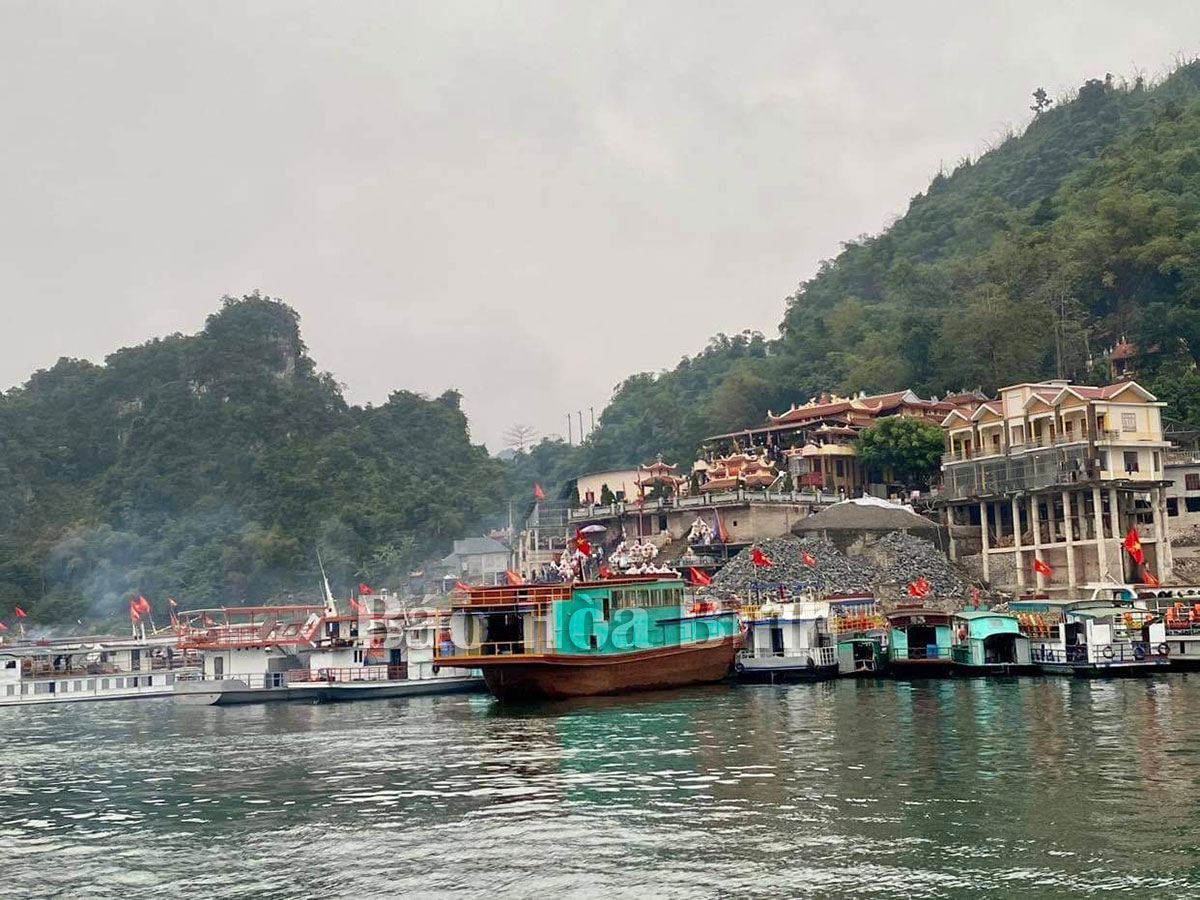
(HBO) – Located about 100km from Hanoi, Thac Bo Temple is a famous spiritual tourist destination in Hoa Binh. The site was listed as a national relic site by the Ministry of Culture, Sport and Tourism in 2009.
Photo: The well-known spiritual tourist site of Thac Bo Temple draws a
large number of visitors.
Lying in the Thac Bo area on the Da River, the Thac Bo Temple complex comprises
Trinh Temple (God Temple), Chau (God Chau) Temple, and Thac Bo Cave (Fairy
Cave). The temple worships two Goddesses of Muong and Dao people.
Legend has it that the Thac Bo Goddesses are Dinh Thi Van, a Muong woman, and
an un-known woman from Dao ethnic group in Vay Nua commune. They offered
support in food and boats to King Le Loi (1384 – 1433) to cross Bo Waterfall
and beat Deo Cat Han rebels in Muong Le, Son La province. After their deaths,
the women's souls often appeared to help locals control the water flow and
cross the waterfall safely, and bless them with favourable weather conditions.
Therefore, locals honour them as Goddesses and construct the temple to worship
them.
Each year, in the seventh day of the first lunar month, Thac Bo Temple festival
is held. It runs through the end of the third lunar month. However, right in
the last month of the previous lunar year, people flock to the temple to
worship, with boats filling the temple’s port area.
Thac Bo Temple, despite being small in size, is a sacred place. Along with its
beautiful landscape with harmony of mountain and water, the site has 38 statues
of different sizes, including two bronze ones.
Arriving in Thac Bo Temple, worshipers will start from Trinh Temple to Chua
Temple. It takes 15-20 minutes rowing from one to the other, during which
visitors can enjoy stunning landscapes from hundreds of stone islands in
different sizes and fresh air. At the last destination of the tour, visitors
can taste special dishes sold in the foot of the temple before exploring the Da
River.
Each year, the Thac Bo national historical relic site attracts dozens of
thousands of visitors who come to pray for peace and luck and wish for a good
start for the year and enjoy the impressive beauty of Hoa Binh./.
Located just a 20-minute drive from Hoa Binh City, Ora Hill Farmstay & Glamping Hoa Binh is a captivating new destination nestled in Mo hamlet, Bình Thanh commune, Cao Phong district. Combining farming with leisure, this tranquil retreat is perfect for those seeking balance, joy, and an immersive experience in the expansive beauty of nature.
Muong Bi - Tan Lac is renowned as one of the four famous Muong regions in Hoa Binh province. Blessed by nature with a favourable climate and stunning landscapes, Tan Lac holds great advantages for tourism development. The local tourism industry has made remarkable strides in recent times thanks to the attention and support from the local authorities and sectors.
With its strategic location, well-developed transport network, and diverse soil and climatic conditions, Hoa Binh is emerging as a must-visit destination in Vietnam's northwestern tourism corridor. The province boasts numerous attractions, including the Kim Boi hot springs (Kim Boi district), the Dau Rong cave complex (Cao Phong), the Mai Chau valley (Mai Chau), and the iconic Hoa Binh hydropower plant.
The northern mountainous province of Hoa Binh has been listed among the 71 most beautiful places to visit worldwide by the prestigious US travel magazine Condé Nast Traveller.
Hoa Binh province’s rich natural and cultural resources position it as a prime location for developing community-based tourism (CBT). In recent years, support from central and provincial policies, as well as assistance from non-governmental organisations, have encouraged local ethnic minority and mountainous communities to actively engage in the sector.



